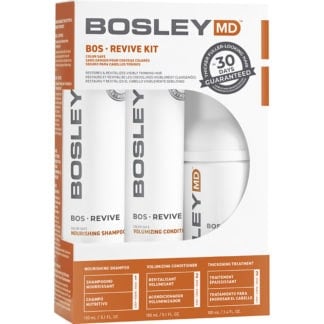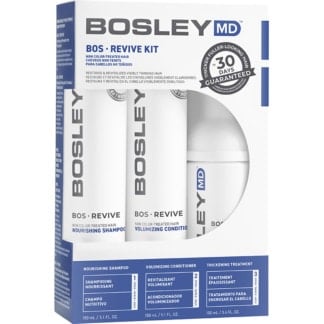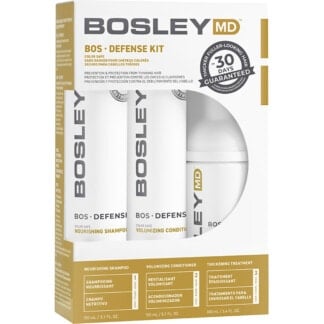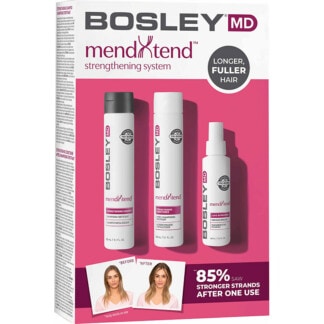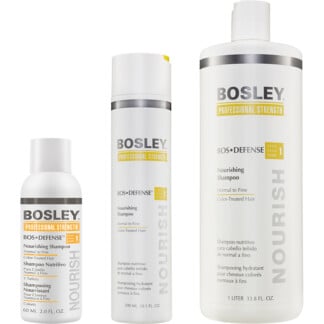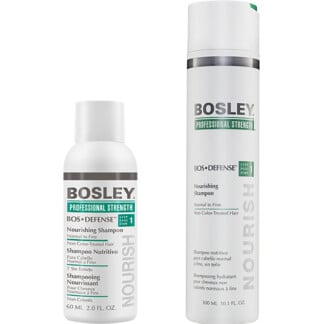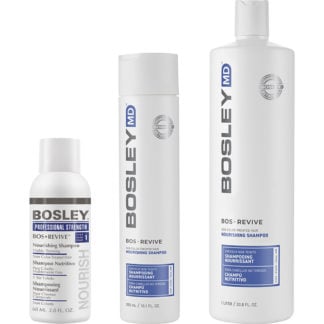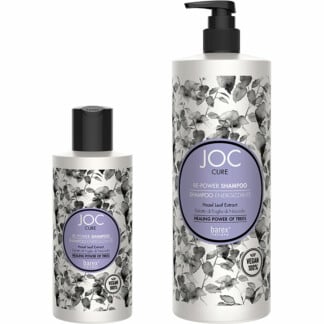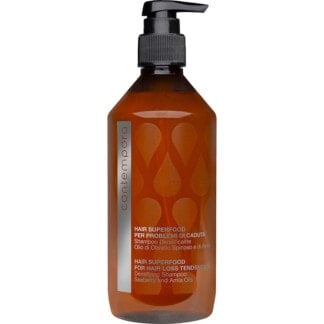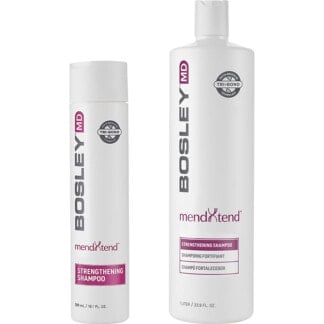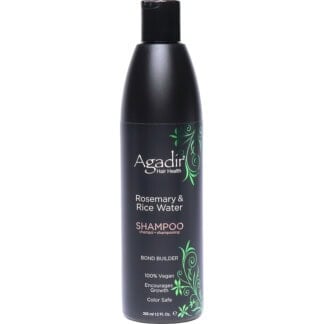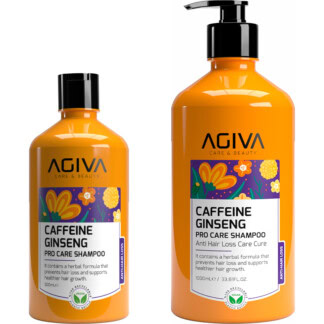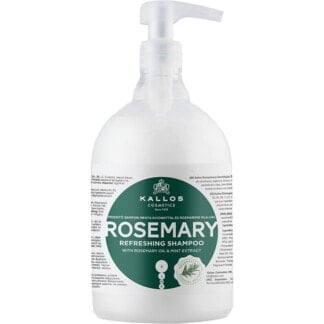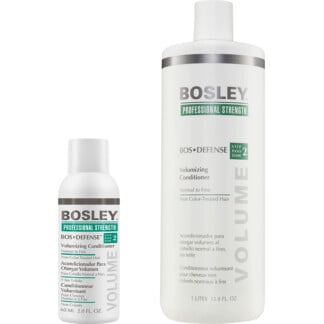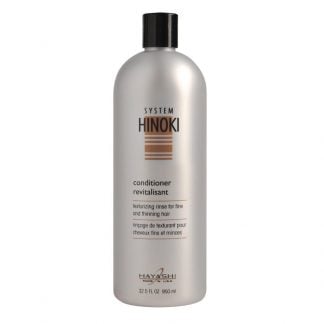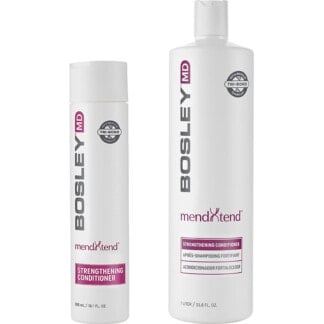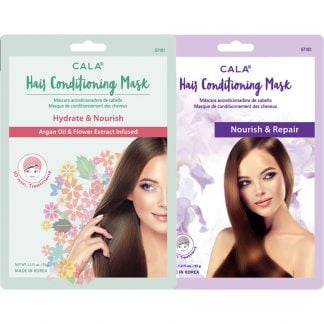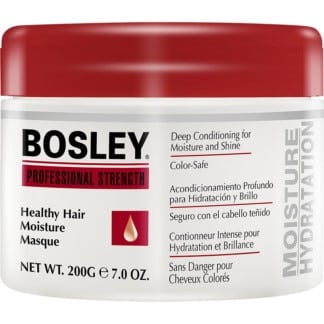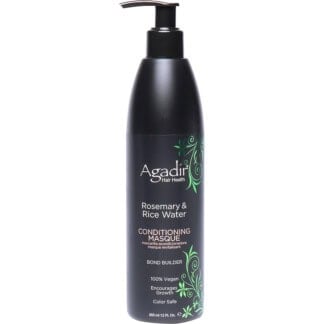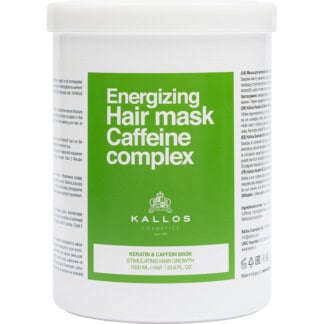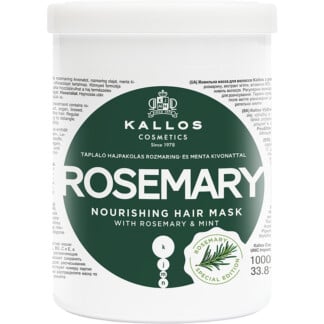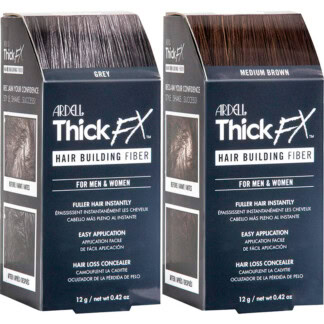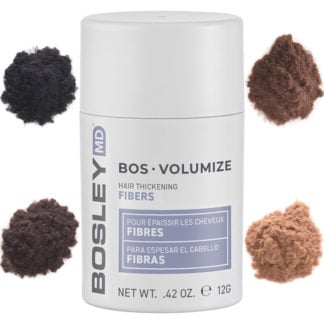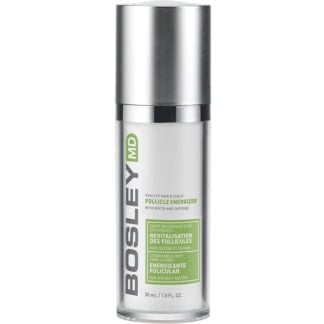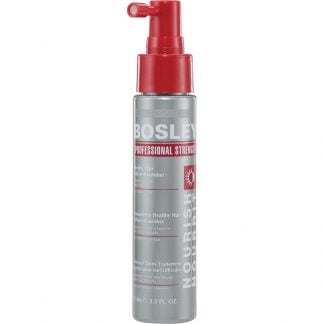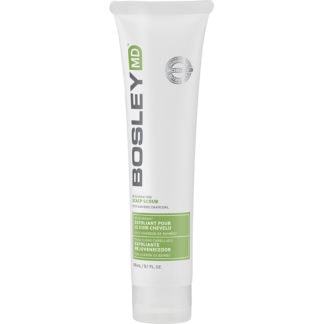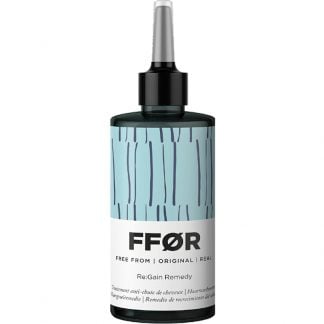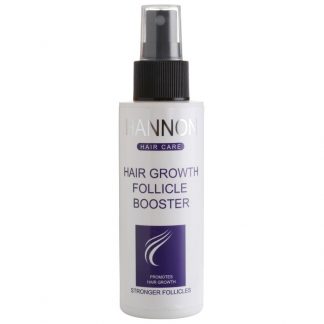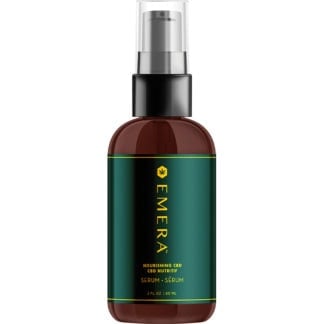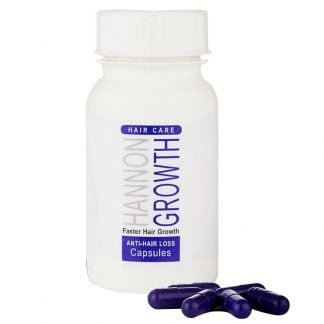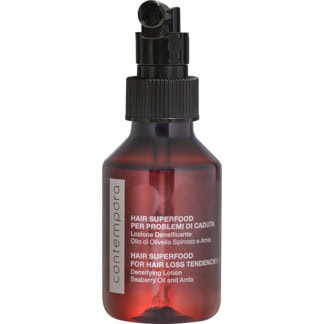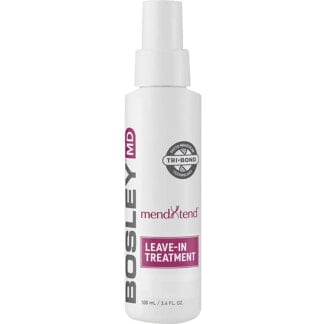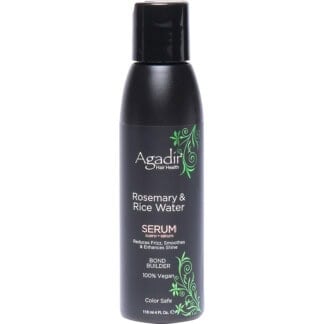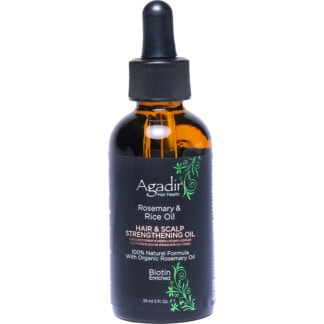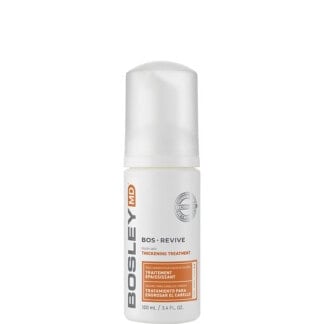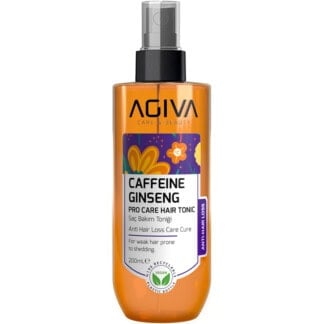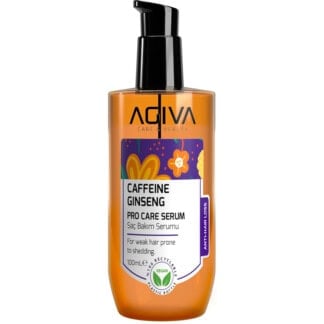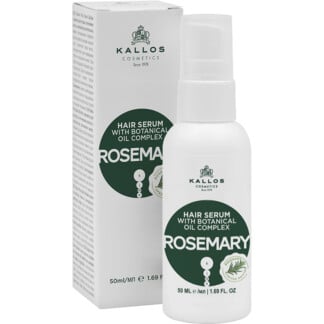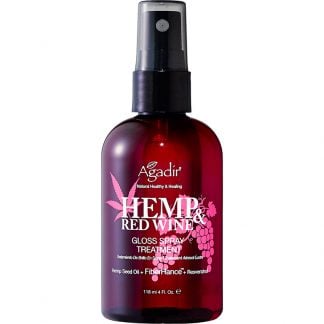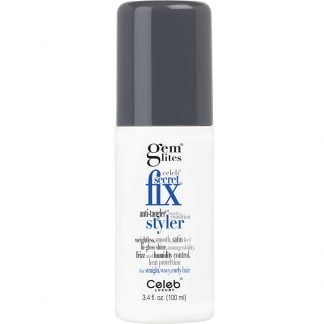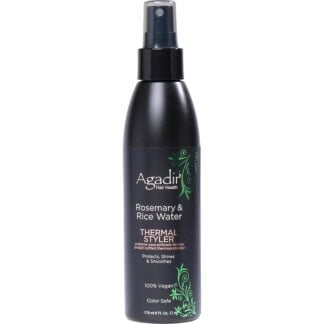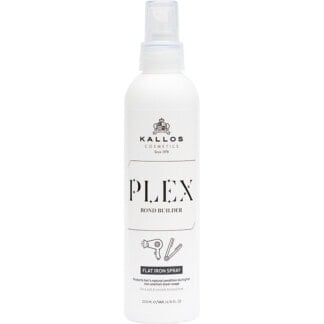
Thinning Hair Causes and the Best Thinning Hair Treatment Products in SA
How to fix thinning hair
Hair loss is one of the most alarming ailments anyone can experience. People think of hair loss as a male problem. In fact, it affects more than a quarter of women.
Various causes can trigger female hair loss. Whatever the reason, there are treatments for thinning hair and habits you can adopt to help prevent further hair loss and make thinning hair appear fuller.
For in-depth information about what causes thinning hair, see our thinning hair FAQ below.
Thinning hair core solutions
Try our recommended combinations of leading treatment products for thinning hair and hair loss – for less than the price of buying the products separately. Dedicated regimens for helping to protect hair against future hair loss, and for reviving hair already affected by thinning.
-
Bosley Revive for Coloured Visibly Thinning Hair Starter Pack, 3 Pieces
Rated 4.60 out of 5From R967.73 Out of stock -
Bosley Revive for Non-Coloured Visibly Thinning Hair Starter Pack, 3 Pieces
Rated 5.00 out of 5From R965.00 Select options -
EMERA Nourishing CBD Shampoo & Conditioner Duo Banded Pack
Rated 5.00 out of 5R1,299.38 incl. VAT Add to cart -
EMERA Nourishing CBD Shampoo & Conditioner Duo Gift Set
Rated 4.50 out of 5R522.25 incl. VAT Add to cart -
Bosley Defense for Coloured Normal to Fine Hair Starter Pack, 3 Pieces
Rated 0 out of 5R995.00 incl. VAT Add to cart -
Bosley MD MendXtend Strengthening System Kit, 3 Pieces
Rated 4.50 out of 5R995.00 incl. VAT Add to cart -
EMERA & CBD Daily Spa Collection, 5 Pieces
Rated 0 out of 5R817.65 incl. VAT Add to cart
Best shampoo for thinning hair
Special treatment shampoo removes dihydrotestosterone and other toxins – primary causes of hair thinning and hair loss – from the hair and scalp. Use regularly to keep hair growing healthy and strong.
-
Bosley Defense for Coloured Normal to Fine Hair Nourishing Shampoo
Rated 5.00 out of 5R71.75 – R726.00 incl. VAT Select options This product has multiple variants. The options may be chosen on the product page -
Bosley Defense for Non-Coloured Normal to Fine Hair Nourishing Shampoo
Rated 5.00 out of 5R71.75 – R300.70 incl. VAT Select options This product has multiple variants. The options may be chosen on the product page -
Bosley Revive for Non-Coloured Visibly Thinning Hair Nourishing Shampoo
Rated 5.00 out of 5R71.75 – R995.00 incl. VAT Select options This product has multiple variants. The options may be chosen on the product page -
Bosley Revive for Coloured Visibly Thinning Hair Nourishing Shampoo
Rated 4.47 out of 5R595.00 – R995.00 incl. VAT Select options This product has multiple variants. The options may be chosen on the product page -
JOC Cure Re-Power Shampoo
Rated 5.00 out of 5R233.80 – R522.75 incl. VAT Select options This product has multiple variants. The options may be chosen on the product page -
Contempora Hair Superfood for Hair Loss Tendencies Densifying Shampoo, 500ml
Rated 4.50 out of 5R226.09 incl. VAT Add to cart -
Bosley MD MendXtend Strengthening Shampoo
Rated 5.00 out of 5R518.00 – R995.00 incl. VAT Select options This product has multiple variants. The options may be chosen on the product page -
Agadir Rosemary & Rice Water Shampoo, 355ml
Rated 0 out of 5R637.50 incl. VAT Add to cart -
Agiva Caffeine Ginseng Pro Care Shampoo for Weak Hair Prone to Loss & Shedding
Rated 4.50 out of 5R157.50 – R262.50 incl. VAT Select options This product has multiple variants. The options may be chosen on the product page -
NEW
Kallos Rosemary Refreshing Shampoo with Rosemary Oil & Mint Extract, 1 Litre
Rated 0 out of 5R217.50 incl. VAT Add to cart
Best conditioner for thinning hair
The best conditioner for thinning hair adds weightless volume and helps create a healthy environment on the hair and scalp to prevent the formation of toxins. Provides a healthy foundation on the scalp for healthy future hair growth.
-
Bosley Defense for Coloured Normal to Fine Hair Volumizing Conditioner
Rated 5.00 out of 5R71.75 – R765.95 incl. VAT Select options This product has multiple variants. The options may be chosen on the product page -
Bosley Defense for Non-Coloured Normal to Fine Hair Volumizing Conditioner
Rated 5.00 out of 5R71.75 – R645.00 incl. VAT Select options This product has multiple variants. The options may be chosen on the product page -
Bosley Revive for Coloured Visibly Thinning Hair Volumizing Conditioner
Rated 4.55 out of 5R71.75 – R995.00 incl. VAT Select options This product has multiple variants. The options may be chosen on the product page -
Bosley Revive for Non-Coloured Visibly Thinning Hair Volumizing Conditioner
Rated 4.00 out of 5R71.75 – R828.00 incl. VAT Select options This product has multiple variants. The options may be chosen on the product page -
Hinoki Texturizing Conditioner for Fine & Thinning Hair, 950ml
Rated 4.29 out of 5R109.00 incl. VAT Add to cart -
CBD Daily Conditioner, 473ml
Rated 0 out of 5R315.45 incl. VAT Add to cart -
Bosley MD MendXtend Strengthening Conditioner
Rated 5.00 out of 5R595.00 – R1,185.00 incl. VAT Select options This product has multiple variants. The options may be chosen on the product page
Best hair mask for thinning hair
Use a leave-on treatment to promote visible thickness and provide long-term protection while nourishing and repairing. Protects hair from harmful environmental exposures, protecting it from fallout and thinning.
-
Cala Hair Conditioning Mask, 35g
Rated 0 out of 5R85.00 incl. VAT Select options This product has multiple variants. The options may be chosen on the product page -
Bosley Renew Healthy Hair Moisture Masque, 200g
Rated 5.00 out of 5R490.60 incl. VAT Add to cart -
Agadir Rosemary & Rice Water Conditioning Masque, 355ml
Rated 4.00 out of 5R645.00 incl. VAT Add to cart -
Agiva Caffeine Ginseng Pro Care Hair Mask for Weak Hair Prone to Loss & Shedding, 300ml
Rated 0 out of 5R240.00 incl. VAT Add to cart -
Kallos Energizing Hair Mask with Keratin & Caffeine Complex, 1 Litre
Rated 0 out of 5R229.33 incl. VAT Add to cart -
NEW
Kallos Rosemary Nourishing Hair Mask with Rosemary & Mint, 1 Litre
Rated 3.00 out of 5R217.50 incl. VAT Add to cart
Best hair oils & treatments for thinning hair
Our products contain marine and botanical oils and extracts to encourage regrowth and enhance thickness. Hair looks and feels thicker and healthier. Use regularly for maximum protection against toxins and the elements.
-
Ardell ThickFX Hair Building Fibre, 12g
Rated 5.00 out of 5R245.85 incl. VAT Select options This product has multiple variants. The options may be chosen on the product page -
Bosley Enhance Hair Thickening Fibers, 12g
Rated 4.50 out of 5R314.40 – R745.00 incl. VAT Select options This product has multiple variants. The options may be chosen on the product page -
Bosley Renew Healthy Hair & Scalp Follicle Energizer, 30ml
Rated 3.00 out of 5R742.00 incl. VAT Add to cart -
Bosley Renew Healthy Hair Follicle Nourisher, 74ml
Rated 0 out of 5R432.55 incl. VAT Add to cart -
Bosley Scalp Therapy Rejuvenating Scalp Scrub with Bamboo Charcoal, 150ml
Rated 0 out of 5R515.90 incl. VAT Add to cart -
FFØR Re:Gain Remedy Hair Loss Treatment, 100ml
Rated 5.00 out of 5R406.89 incl. VAT Add to cart -
Hannon Follicle Booster Spray Anti Hair Loss Treatment, 125ml
Rated 4.75 out of 5R392.66 incl. VAT Add to cart -
EMERA Nourishing CBD Serum, 60ml
Rated 5.00 out of 5R389.00 incl. VAT Out of stock -
EMERA Nourishing CBD Detangler Plus, 118ml
Rated 0 out of 5R284.85 incl. VAT Out of stock -
Hannon Anti-Hair Loss Capsules, 60 Tablets
Rated 5.00 out of 5R255.00 incl. VAT Out of stock -
Contempora Hair Superfood for Hair Loss Tendencies Densifying Lotion, 100ml
Rated 4.25 out of 5R247.62 incl. VAT Add to cart -
Bosley MD MendXtend Leave-In Treatment, 100ml
Rated 5.00 out of 5R595.00 incl. VAT Add to cart -
Agadir Rosemary & Rice Water Leave-In Treatment, 178ml
Rated 5.00 out of 5R510.00 incl. VAT Add to cart -
Agadir Rosemary & Rice Water Serum, 118ml
Rated 5.00 out of 5R690.00 incl. VAT Add to cart -
Agadir Rosemary & Rice Water Hair & Scalp Strengthening Oil, 59ml
Rated 0 out of 5R480.00 incl. VAT Add to cart -
Bosley Revive for Coloured Visibly Thinning Hair Thickening Treatment, 100ml
Rated 4.50 out of 5R615.00 incl. VAT Add to cart -
Agiva Caffeine Ginseng Pro Care Hair Tonic for Weak Hair Prone to Loss & Shedding, 200ml
Rated 5.00 out of 5R180.00 incl. VAT Out of stock -
Agiva Caffeine Ginseng Pro Care Serum for Weak Hair Prone to Loss & Shedding, 100ml
Rated 4.50 out of 5R240.00 incl. VAT Add to cart -
NEW
Kallos Rosemary Hair Serum with Botanical Oil Complex, 50ml
Rated 0 out of 5R165.00 incl. VAT Add to cart
Heat protection for thinning hair
Choose a leave-in nourishing thermal protector to prevent hair loss and thinning caused by heat styling and UV exposure. Prevents unnecessary stress caused by heat damage.
-
Agadir Hemp & Red Wine Gloss Spray Treatment, 118ml
Rated 5.00 out of 5R425.00 incl. VAT Add to cart -
Celeb Luxury Gem Lites Secret Fix Anti-Tangler, 100ml
Rated 2.50 out of 5R257.78 incl. VAT Out of stock -
Agadir Rosemary & Rice Water Thermal Styler, 355ml
Rated 0 out of 5R487.50 incl. VAT Add to cart -
Kallos Plex Bond Builder Flat Iron Spray, 200ml
Rated 0 out of 5R169.25 incl. VAT Add to cart
Thinning Hair FAQ
If you notice you’re experiencing hair loss and thinning hair, there are ways to make your locks appear fuller and help prevent further loss. Start by always using hair products that are specially designed to help hydrate and heal your hair and scalp.
Causes
Hair loss – of around 100 hairs a day – is normal. It’s simply a sign that your body is growing new, healthy hair to replace the old.
If you notice you’re losing more hair, your hair is thinning or you see more scalp than usual, you may be losing more hair than is normal. The main causes of hair loss and thinning hair in women are:
- harsh hair styles and treatments
- genetics
- hormones
- nutritional deficiencies
- intense emotional or physical stress
- medication
- illness.
The main reason for thinning hair in men is hereditary. Men commonly inherit the propensity to lose hair, known as androgenic alopecia. About half of men experience male-pattern hair loss. It can start during a man’s 20s, even his teens.
Thinning hair and ageing go hand in hand. Up to a quarter of women experience androgenic alopecia, or female-pattern hair loss, by the age of 50.
In a woman, it’s more common to have a widening of the parting or general hair thinning all over the scalp.
Androgenic alopecia is caused by high levels of androgens, including dihydrotestosterone (DHT). They shrink your hair follicles, as well as cause hair to grow out looking thinner, more brittle and to fall out faster. DHT can also make it take longer for your follicles to grow new hairs.
There are a number of common medical causes of hair loss and thinning hair. Some are temporary. Others, unfortunately, are permanent.
In some cases, thinning hair is triggered by something happening inside the body. These causes include thyroid problems, changing hormones, a recent pregnancy or an inflammatory or auto-immune condition.
In many of these cases, alopecia and thinning hair can be stabilised with treatment. In some cases, it’s completely reversible and the hair will fully regrow.
Creating and maintaining healthy hair relies on good nutrition. When a person is nutrient deficient, particularly deficiencies in iron, zinc, vitamin B3 (niacin) and protein, hair loss is common. Low iron and hair thinning have also been linked.
A range of illnesses, from autoimmune diseases and skin conditions such as psoriasis and eczema, can cause alopecia.
It can also be caused by medication that’s administered to treat disease. Chemotherapy to treat cancer is known to routinely cause hair loss. Medications used to treat high blood pressure, arthritis and depression are also known to cause severe shedding.
Thinning hair refers to the early stages of hair loss. The hair shafts begin to thin with each growth cycle. Once the hair no longer grows, this is referred to as baldness.
If you have noticed that your hair is thinning, you have more hair loss than usual or a patch of bald scalp, see your doctor or a dermatologist. He or she can help establish the underlying cause.
It’s important to know that thinning hair in women doesn’t necessarily lead to baldness in the way that it often does in men. It’s common for women’s hair to thin out as they age.
Unfortunately, if you’re diagnosed with androgenic alopecia, or female-pattern hair loss, you may experience bald patches. It’s important to be diagnosed quickly so that any treatment regimen can start early. Treatment will depend on the underlying cause. Medication, like minoxidil, can help certain types of hair loss.
Normally, hair goes through three life stages:
- growth phase
- transitional phase (hair stops growing but doesn’t fall out)
- resting phase (hair falls out).
During pregnancy, most women notice their hair going into a rapid growth phase. Their locks become luscious and thick. This is because there’s a surge of the hormone oestrogen that makes hair (and other things) grow.
Hair growth is kicked into gear and it lasts longer than usual. Normal shedding doesn’t occur. After the baby is born, oestrogen levels return to normal. The hair’s usual growth cycle resumes and starts to shed “pregnancy hair”.
Some women experience mild shedding. Others experience intense shedding for months. Both are normal and temporary. You don’t need to do anything to prevent it.
When you know what causes hair loss after pregnancy, you can stop worrying about the cause. Technically, it isn’t hair loss, it’s hair shedding.
That said, even when you know what causes hair thinning after pregnancy, it doesn’t make you feel good. The good news is there are ways to make your hair look and feel fuller while you wait for your hair cycle to return to normal.
The most important tip is to avoid products that weigh down the hair. Instead, choose volumising shampoos and conditioners that are formulated for post-partum hair loss, such as Bosley’s New Mom Hair Recovery Kit.
Tips
All hair benefits from using the appropriate hair products. Unfortunately, depending on its cause, not all hair loss or thinning can be avoided or fixed.
The best approach is to treat your hair with professional quality products formulated for thinning hair. Start by washing your hair as often as is needed – but no more. Both under- and over-washing can affect the volume and feel of your hair. Washing your hair too frequently strips the hair of its natural oils. This makes it dry and more prone to breakage.
Wash your hair no more than two to three times a week. Always use shampoo for thinning hair, followed by conditioner for thinning hair. Countering hair loss and thinning involves removing toxins present on the scalp and hair follicle, such as DHT, so hair can grow from a healthy base. Conditioner makes your hair shinier and reduces static, both of which help thinning hair look fuller.
Style your hair gently and – if possible – without heat. Heat can cause damage to hair that leads to shedding and breakage. So, avoid – or limit – heat styling entirely. If you must use hot styling tools or a hairdryer, apply a thermal protection product.
Also, avoid chemical treatments that dry out your hair and cause breakage at the root and along the hair shaft.
Don’t sleep with your hair tied up. If you want to wear your hair up during the day, choose a style that doesn’t pull or put pressure on your hair and scalp. Ponytails, braids and dreads are particularly damaging when worn for long periods. They can cause what’s known as traction alopecia, which may lead to progressive thinning of the hairline. The hair follicle becomes scarred and the hair loss can be permanent.
Stylists recommend a shoulder-length, slightly angled bob as the best haircut for women with thinning or fine hair. This works because by bulking up the look and volume of your hair. It can be blunt or textured. Go for a bob with or without a fringe.
You can always consider hair extensions, hair toppers and wiglets. They can disguise thinning hair and instantly add length and volume. For hair that’s thinning at the top of the scalp, a hair topper can be a lifesaver. They’re designed to conceal partial hair loss.
Products
Thinning hair treatments can help to visibly thicken and volumise your hair.
We recommend hair restoration products that use advanced technology to give immediate benefits of thicker, fuller hair. These products can defend, preserve and replace hair as we age.
Also, try leave-on products that keep your hair moisturised throughout the day.
The best solution is to always use volume-adding shampoo and volume-adding conditioner. We offer some of the best products available in South Africa for women suffering from thinning hair.
These products contain biogenic, plant and marine ingredients that strengthen and fortify hair for thickness and volume. They increase and strengthen hair growth and follicles for a healthy scalp, while removing and preventing the formation of DHT.
If you must blow dry your hair and want to know how to blow dry to add volume, remember to always prime your hair while it’s wet using a lightweight protect-and-hydrate product.
When blow drying, start with the root and blow the air directly towards the scalp. Blow dry the hair against the direction it will lie. This will cause the root to stand up rather than fall directly against the scalp, giving the appearance of more volume.
As well as hair products for thinning hair, there are products for stimulating hair growth that can be prescribed by your doctor. He or she may prescribe topical treatments for hair loss and thinning hair, like minoxidil, or recommend an over-the-counter version, such as Regaine.
A newer option being used to treat hair loss is platelet-rich plasma (PRP) injections. The science is complex but growth factors contained in our platelets appear to stimulate the regeneration of hair follicles.
If you know some celebrities who have suddenly got full heads of hair and you’re wondering how to fix thinning hair or how to fix hair loss, the answer may be a hair transplant.
This surgical procedure moves active hair follicles from the back of the scalp to areas where the hair is thinning. Once transplanted, the hair grows normally.
Hair transplantation can work extremely well but it’s expensive and time consuming. It is less successful for thinning across the scalp but is very effective in treating smaller, more defined areas of balding.


